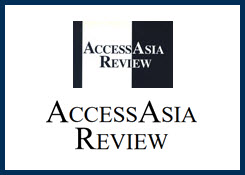From AccessAsia Review Vol. 1, No. 1 (Out of Print)
The Sources of East Asia's Economic Growth
In this essay, the authors review recent debates on East Asia’s economic growth. Explanations for the region’s high growth rate initially centered on market-oriented, and particularly export-oriented policies. However, these explanations rested ultimately on rapid productivity improvements. Recent evidence suggests that it is factor accumulation, rather than productivity, that has been the most important element in propelling these economies’ development. In a controversial essay, Paul Krugman used this finding to argue that, as with Soviet growth before it, such “accumulation-led” growth would ultimately falter due to diminishing returns and low productivity growth. The authors dispute Krugman’s hypothesis on two grounds.
In this essay, the authors review recent debates on East Asia’s economic growth. Explanations for the region’s high growth rate initially centered on market-oriented, and particularly export-oriented policies. However, these explanations rested ultimately on rapid productivity improvements. Recent evidence suggests that it is factor accumulation, rather than productivity, that has been the most important element in propelling these economies’ development. In a controversial essay, Paul Krugman used this finding to argue that, as with Soviet growth before it, such “accumulation-led” growth would ultimately falter due to diminishing returns and low productivity growth. The authors dispute Krugman’s hypothesis on two grounds. First, productivity growth, although less important than previously assumed, has been positive in Asia. Second, East Asian economies are not unique in relying on accumulation as the main source of growth for Western economies as well. The “miracle,” therefore, is no loger why Asia grew so fast, but how Asian countries managed to invest at such a sustained and high level. As heterodox accounts have long argued, there is a growing consensus that some aspects of state intervention in East Asia had positive effects in this regard. At the same time, the central role previously given to exports is proving somewhat difficult to sustain.


